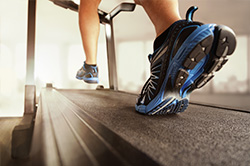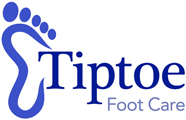 Back, neck, knee and hip pain can all be caused by foot and ankle issues that affect your posture (how you stand) and the way you walk. Through biomechanical assessment and gait analysis, our podiatrists will identify this for you and can resolve a large number of problems with direct treatment (e.g. within our pain and movement clinic) or through advice on footwear and insoles.
Back, neck, knee and hip pain can all be caused by foot and ankle issues that affect your posture (how you stand) and the way you walk. Through biomechanical assessment and gait analysis, our podiatrists will identify this for you and can resolve a large number of problems with direct treatment (e.g. within our pain and movement clinic) or through advice on footwear and insoles.
In some cases pain will be caused simply by inappropriate footwear choices. We apply our clinical expertise and experience to provide practical footwear advice (within the constraints of your work/lifestyle) so that you can find suitable shoes that will be better for your feet without sacrificing your individual style. Please ask for our leaflet, as poorly fitting or the wrong shape of shoe can often lead to unnecessary strain and problems.
Orthotics and insoles
An orthotic is a device that sits in your shoe to control the functions of the foot whilst walking. The important point is that an insole, if you need one, should be chosen to suit your specific needs and your foot shape.
Different people will have different requirements and even your own two feet may have different needs. Like glasses, you may find that insoles are recommended for specific activities or only when wearing particular types of footwear. Also, like glasses, if used inappropriately they can be a cause of pain rather than a cure – you would not simply borrow a friend’s or buy a random pair in a shop and expect them to help you. Therefore, just like you would see an optician for an eye test and to get their recommendations on the right corrective lenses, you should consult a podiatrist for a gait assessment and advice on the suitable insole for you.
Also, don’t assume that just because you have needed insoles in the past, that is necessarily still true. Your body and gait will evolve as you get older. The type or strength of insole might need to change over time as you grow, recover from an injury, or in response to changes in your lifestyle and body – this is particularly true for women during pregnancy.
Simply picking a random insole off the shelf in a shop risks making the problem worse or creating other issues. Different orthotics are suitable to different foot types, varying in firmness, depth and location of support as well as in size. We can offer different options to suit your budget whilst giving you the advice and help you need. Individual bespoke insoles can be made from a cast to specifically fit your foot or we can use our expertise to provide you with the most suitable off the shelf insole from a core range (applying simple adjustments where needed) that have different shapes to address different issues.
Conditions we can help with orthotics
All of the conditions described below can result from poor posture, walking style or foot structure. If you are getting these pains then by undertaking a biomechanical assessment we can try to identify the problem and provide you with suitable help to improve or fix it.
Heel/Arch Pain – Heel Spur / Plantar Fasciitis
Heel pain occurs when the plantar ligament beneath the foot is constantly pulled and strained due to the foot collapsing into pronation or supination. This causes a condition called plantar fasciitis or heel spurs. Many different foot types can be affected by this condition and it can aggravate all areas of the foot including the heel, inner or outer arch and even the ball of the foot.
Bunions
Bunions are caused by excessive weight being forced through the outside of the big toe joint. The pressure can cause the big toe to start to turn inwards causing a lump to form on the outside of the toe. This can become very sore, lead to a burning sensation and look unsightly. Accurate orthotics cannot cure a bunion, but will realign the foot and thus reduce pain and prevent the bunions becoming worse.
Ball of the foot – Metatarsals
Pain and symptoms occurring in this area are usually due to a drop in the metatarsal heads which form the metatarsal arch in the ball of the foot. This can lead to metatarsalgia (a general pain in this area), Morton’s Neuroma, March fractures, corns and calluses.
Shin Pain / Shin Splints
Pain in the shins is usually a result of shin splints. This is caused by poor foot biomechanics resulting in the pulling of the muscle (Tibialis anterior) which runs between the bones in the lower leg. A relatively common sports injury, you may find this is normally aggravated when running and can instantly affect your training or hobbies.
Ankle Pain
Pain in this area can be caused by a misalignment of the main joint of the foot (subtalar joint). This misalignment can lead to instability of the ankle and can cause pain in either side of the ankle.
Achilles Pain – Achilles Tendonitis
An instability in the main (subtalar) joint in the foot can push the foot into a flatter position (pronation). This in turn forces the calf muscles to work harder to attempt to keep the foot in a neutral position. Since the Achilles tendon attaches onto the calf muscle and heel bone this can result in a constant pull and lead to inflammation of the Achilles (Achilles tendonitis). The Achilles can be slow to heal so this condition can be extremely debilitating.
Knee Pain – Patella-Femoral Syndrome
Pain which is localized to the front or inside of the knee is normally caused by over pronation of the foot (flat feet). The foot can then cause the knee to internally rotate resulting in a misalignment of the knee cap. This leads to irritation of the Patella Tendon known as Patella Tendonitis or Chondromalacia.
Hip Pain – Piriformis Syndrome
Pronation of the foot (flattening of the arch) can have an effect on the knee, causing an internal rotation. This can have an impact on the muscles that support the leg. In some cases this can lead to a pain in the outside of the thigh (Ilio Tibial Band syndrome) and into the hips (Piriformis syndrome).
Lower Back Problems
Lower back pain can often be a result of poor foot function and can occur if a patient has a condition known as Ankle Equines. Ankle Equines can cause a hyper extension of the knees and a forward tilt of the pelvis. Lower back pain can also occur from other biomechanical imbalances of the feet such as pronation and supination.
